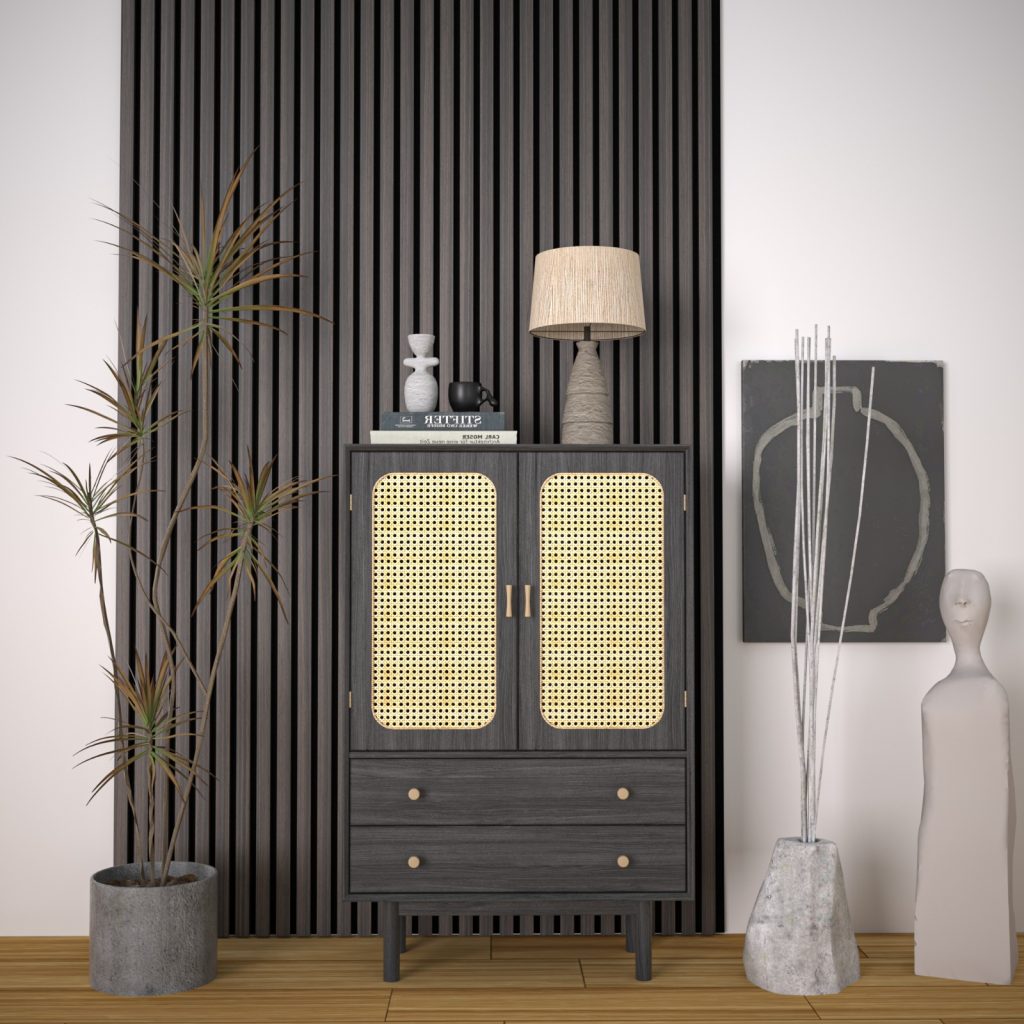Acoustic panels are a popular solution for managing noise in homes, offices, and other spaces where sound quality and noise reduction are important. But how much noise can acoustic panels absorb, and what makes them effective? This blog dives into the details of acoustic panels, their noise absorption properties, and how they work to create quieter, more comfortable environments.
What Are Acoustic Panels?
Acoustic panels are sound-absorbing materials designed to reduce noise, echoes, and reverberations in a room. They are often made from wood, foam, fabric, or other porous materials that effectively trap sound waves. Acoustic panels are used in:
- Home theaters
- Recording studios
- Offices
- Restaurants
- Schools
These panels work by absorbing sound waves that would otherwise bounce off hard surfaces like walls, ceilings, and floors, making them an essential tool for improving room acoustics.
How Much Noise Can Acoustic Panels Absorb?
The amount of noise acoustic panels can absorb depends on several factors:
- Material Type
Acoustic panels made from porous materials, like wood fiber or foam, absorb a significant amount of noise by trapping sound waves. - Panel Thickness
Thicker panels generally absorb more low-frequency sounds, while thinner panels are better at reducing higher-frequency noises. - Placement in the Room
Strategically placing panels on walls, ceilings, and corners maximizes their noise absorption effectiveness. - Noise Frequency
Acoustic panels perform differently across sound frequencies. High-frequency sounds are absorbed more easily, while low-frequency bass sounds require specialized panels or additional bass traps.
Quick Fact: Most standard acoustic panels can absorb 50% to 90% of noise in a room, depending on the factors above.
Noise Reduction Coefficient (NRC)
The Noise Reduction Coefficient (NRC) is a critical measurement of how much sound an acoustic panel can absorb. It is rated on a scale from 0 to 1:
- 0 means no sound absorption (e.g., a concrete wall).
- 1 means total sound absorption.
Typical acoustic panels have an NRC rating between 0.7 and 1.0, indicating they absorb 70% to 100% of the sound that reaches them. Panels with higher NRC ratings are best for spaces that require maximum noise control.
Benefits of Using Acoustic Panels
- Noise Reduction
Acoustic panels significantly reduce unwanted noise, making conversations clearer and improving sound quality in the room. - Improved Focus
Reducing noise distractions can enhance focus, particularly in offices or study areas. - Aesthetic Appeal
Modern acoustic panels come in a variety of designs, including wood finishes and fabric covers, adding visual appeal to spaces. - Versatility
Acoustic panels are effective in various environments, including homes, offices, and public spaces.
Where to Place Acoustic Panels for Maximum Noise Absorption
Proper placement is essential to achieve optimal noise absorption. Here are some effective placement strategies:
1. On Walls
Place panels on large, flat walls to absorb direct sound waves. This helps reduce echoes and reverberation.
2. On Ceilings
In rooms with high ceilings, installing panels overhead can control vertical sound waves.
3. In Corners
Corners are prone to bass buildup. Placing acoustic panels or bass traps in corners helps absorb low-frequency noise.
How Acoustic Panels Work
Acoustic panels absorb sound through a process called dissipation. When sound waves hit the panel, their energy is converted into small amounts of heat as they pass through the porous material. This reduces the amount of sound that reflects back into the room.
Here’s a simplified flow diagram of how acoustic panels absorb noise:
- Sound waves travel through the air.
- Waves hit the panel surface.
- Energy is trapped in the porous material.
- Remaining sound energy is dissipated as heat.
This process significantly reduces noise and echoes, creating a quieter environment.
Types of Acoustic Panels
1. Wood Panels
- Stylish and durable
- Ideal for enhancing both aesthetics and acoustics
2. Foam Panels
- Lightweight and affordable
- Best for DIY soundproofing projects
3. Fabric Panels
- Customizable and decorative
- Effective for absorbing mid-to-high frequencies
4. Hybrid Panels
- Combine materials like wood and foam for improved performance
- Great for professional recording studios
Acoustic Panel Efficiency
Below is a table showing the approximate noise absorption capabilities of different acoustic panels based on material and thickness.
| Panel Type | NRC Rating | Ideal Use |
|---|---|---|
| Foam Panels | 0.6 – 0.8 | Home theaters, offices |
| Wood Panels | 0.7 – 0.9 | Aesthetic spaces, meeting rooms |
| Fabric Panels | 0.7 – 1.0 | Studios, classrooms |
| Hybrid Panels | 0.8 – 1.0 | High-performance sound control |
Common Questions About Acoustic Panels
1. How effective are acoustic panels at reducing noise?
Acoustic panels can absorb 50% to 90% of noise depending on material, placement, and sound frequency.
2. Are acoustic panels easy to install?
Yes, most panels come with mounting kits or adhesive options, making them easy for DIY installation.
3. Do acoustic panels completely block noise?
No, acoustic panels absorb noise but do not block it entirely. For soundproofing, combine panels with barriers like mass-loaded vinyl.
4. How many panels do I need for a small room?
A small room typically requires 6 to 12 panels, depending on the level of noise reduction needed.
5. Can I use acoustic panels outdoors?
Some acoustic panels are designed for outdoor use, but most are best suited for indoor environments.
Conclusion
Understanding how much noise acoustic panels can absorb is key to improving the acoustics of any space. By choosing panels with the right material, thickness, and placement, you can reduce unwanted noise by up to 90%, making your home or workspace quieter and more comfortable. Whether you’re upgrading your home theater or creating a peaceful office, acoustic panels are a valuable investment for better sound control.








